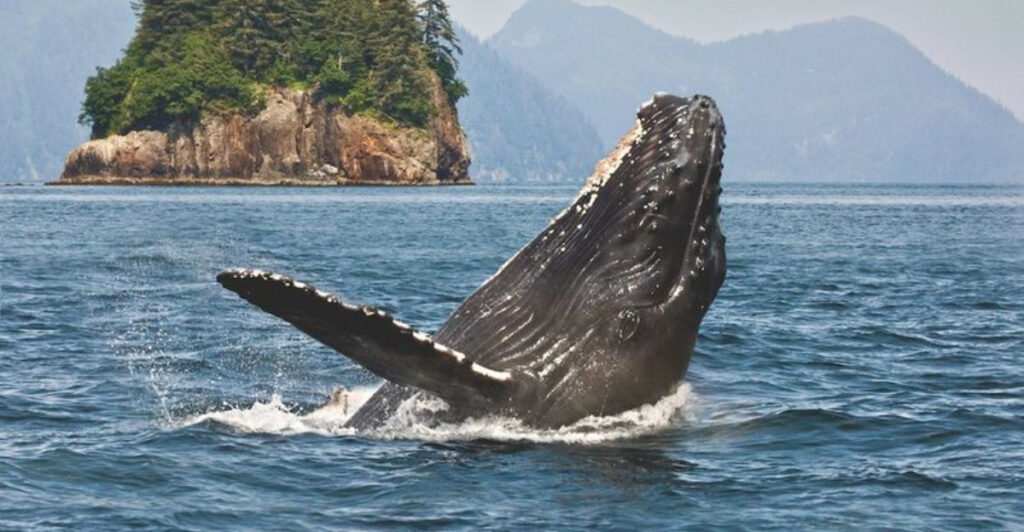Alaska’s Kenai Fjords National Park stands as one of nature’s most incredible masterpieces, where massive glaciers have carved dramatic landscapes over thousands of years. This wilderness wonderland offers visitors a chance to witness the raw power of ice and water working together to create breathtaking fjords, towering cliffs, and pristine wilderness. From ancient icefields to abundant wildlife, this remarkable park showcases the untamed beauty that makes Alaska truly special.
1. Home to Nearly 40 Glaciers Flowing from Ancient Ice

Massive rivers of ice flow like frozen highways throughout this incredible park. The Harding Icefield serves as the source for approximately 38 glaciers that slowly make their way toward the sea.
Each glacier tells its own story through centuries of movement and change. Some glaciers advance while others retreat, creating an ever-changing landscape that fascinates scientists and visitors alike.
Bear Glacier stands out as one of the most impressive, stretching for miles and offering spectacular views. Watching these ancient ice formations is like witnessing Earth’s history in motion, making every visit truly unforgettable.
2. Born in 1980 as America’s Newest Wilderness Treasure
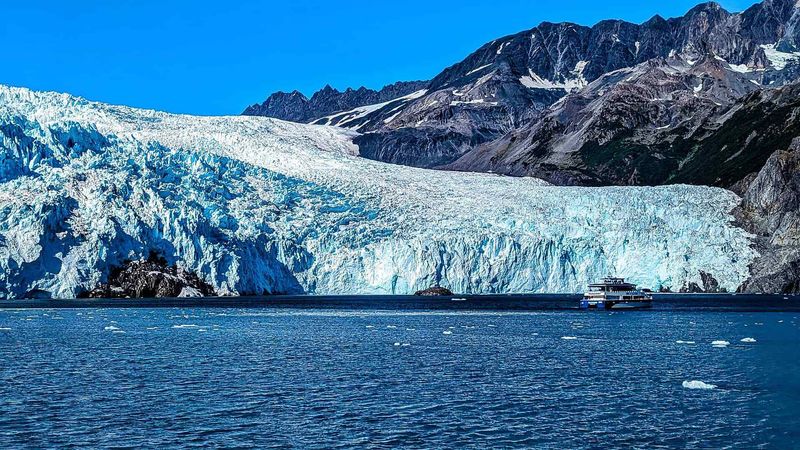
December 2, 1980 marked a special day when Kenai Fjords officially became a national park. The Alaska National Interest Lands Conservation Act created this protected wilderness, making it one of America’s youngest national parks.
Before gaining park status, this land remained largely untouched by development. Local communities and conservationists worked together to preserve this incredible landscape for future generations to enjoy and explore.
Covering nearly 670,000 acres, the park represents a commitment to protecting Alaska’s unique ecosystems. Though relatively small compared to other Alaskan parks, its impact on wildlife conservation and scientific research proves enormous.
3. Wildlife Paradise Where Land and Sea Animals Thrive
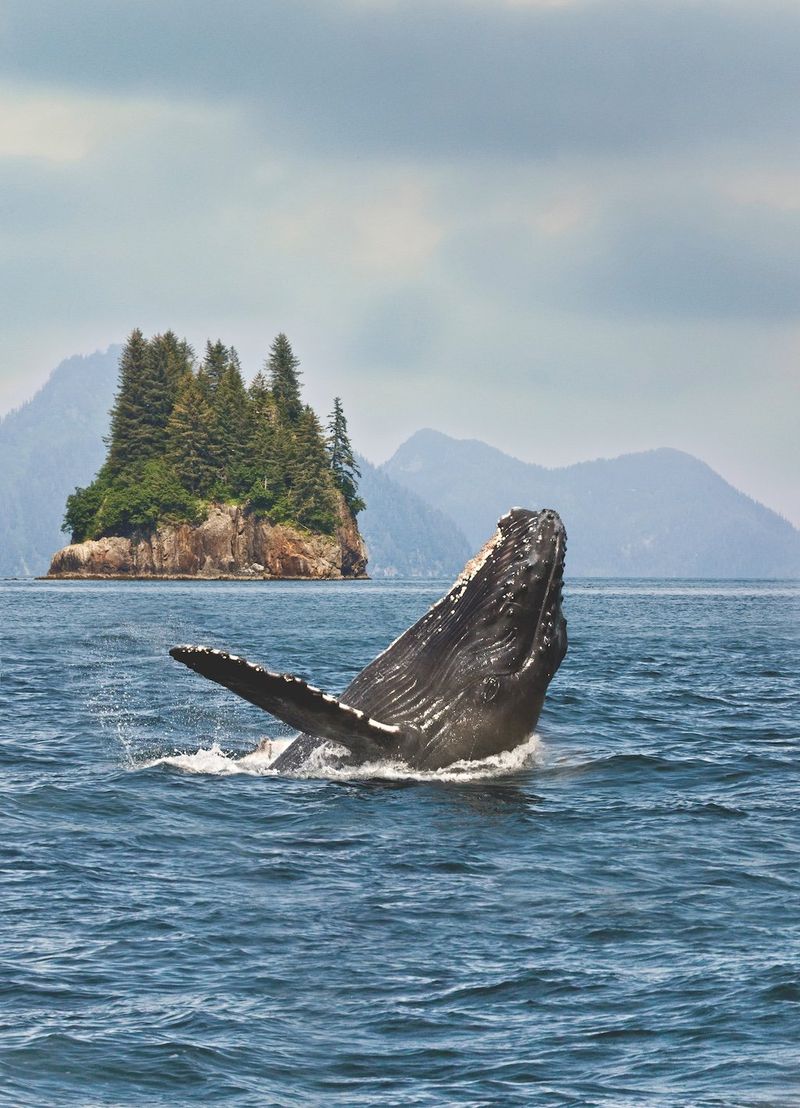
Humpback whales breach the surface while orcas patrol the deep waters of this marine sanctuary. Sea otters float on their backs, cracking open shellfish as harbor seals bask on rocky shores nearby.
Mountain goats navigate steep cliffs with amazing skill, while both black and brown bears roam the forests. Moose wade through marshlands, and over 190 bird species call this place home.
Puffins nest on coastal cliffs during summer months, creating colorful displays against the dramatic landscape. Steller sea lions gather in large colonies, and bald eagles soar overhead, making wildlife viewing absolutely spectacular throughout the park.
4. Exit Glacier Offers Easy Access to Frozen Wonders
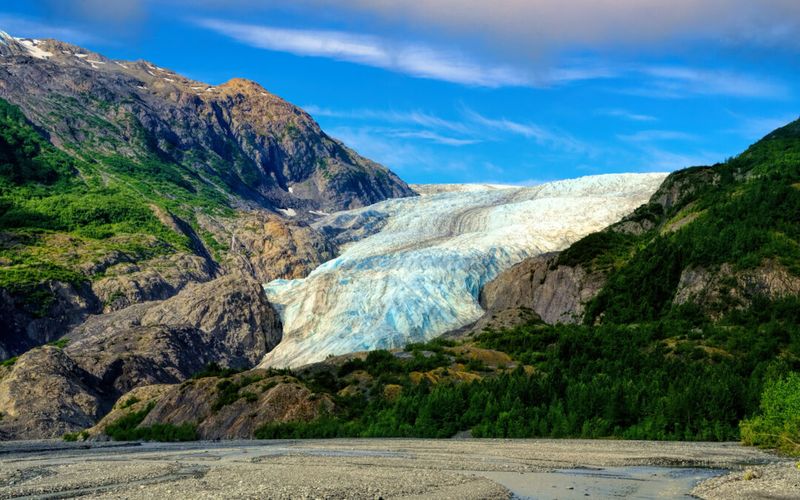
Unlike most park attractions that require boats or planes, Exit Glacier welcomes visitors via a simple road trip from Seward. Families can drive right up to trailheads and start exploring immediately.
Multiple hiking trails suit different skill levels, from easy walks to challenging climbs. The glacier’s terminus provides an up-close look at this massive ice formation, while longer trails lead adventurous hikers to breathtaking viewpoints.
Rangers offer guided walks and educational programs throughout the summer season. Watching this glacier change over time helps visitors understand climate science in a very real and personal way that textbooks simply cannot provide.
5. Harding Icefield Spans 700 Square Miles of Ancient Ice
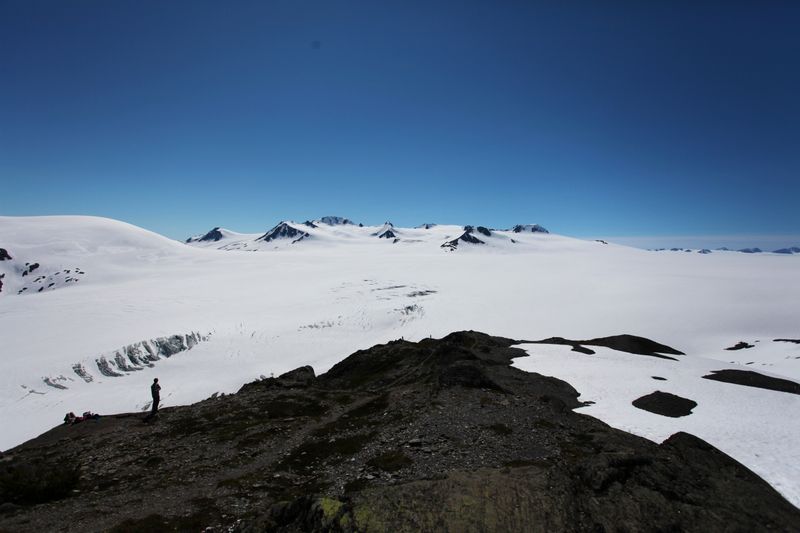
Imagine standing on top of 700 square miles of solid ice that formed thousands of years ago. The Harding Icefield represents one of the largest icefields completely within United States borders, creating an otherworldly landscape.
During the last Ice Age, this icefield connected to much larger ice sheets covering most of Alaska. Today, it serves as a living laboratory where scientists study climate patterns and glacier behavior.
Reaching the icefield requires an 8.2-mile round-trip hike that challenges even experienced adventurers. Those who complete the journey discover panoramic views that stretch endlessly across this frozen wilderness, making every difficult step absolutely worthwhile.
6. Summer Season Opens Doors to Adventure Activities
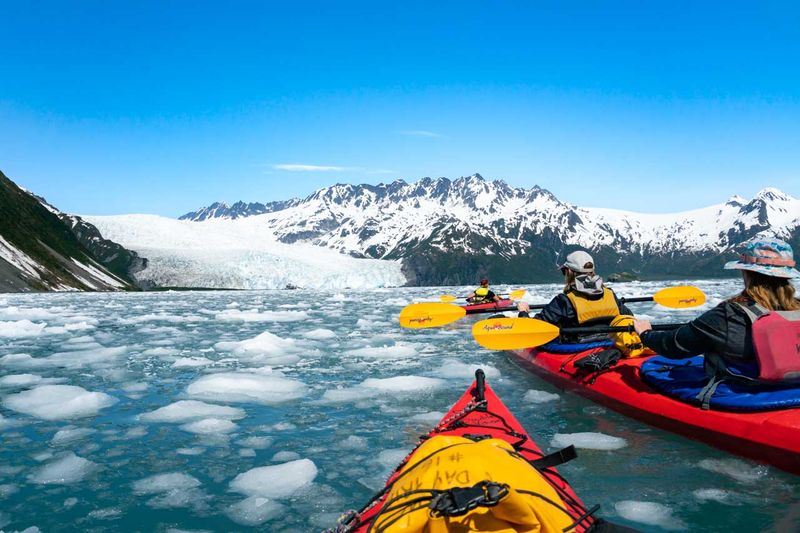
Winter transforms this park into an nearly inaccessible frozen fortress, but summer brings it back to life. Most boat tours, ranger programs, and hiking trails operate only from May through September when weather conditions improve dramatically.
Visitors can enjoy kayaking through calm fjords, camping under midnight sun, and photographing wildlife during these warmer months. Summer temperatures rarely exceed 60 degrees, so warm clothing remains essential even during peak season.
The park receives about 60 feet of snow annually, making summer the only practical time for most recreational activities. Planning ahead becomes crucial since the short season fills up quickly with eager adventurers.
7. Dramatic Fjords Carved by Thousands of Years of Glacial Power
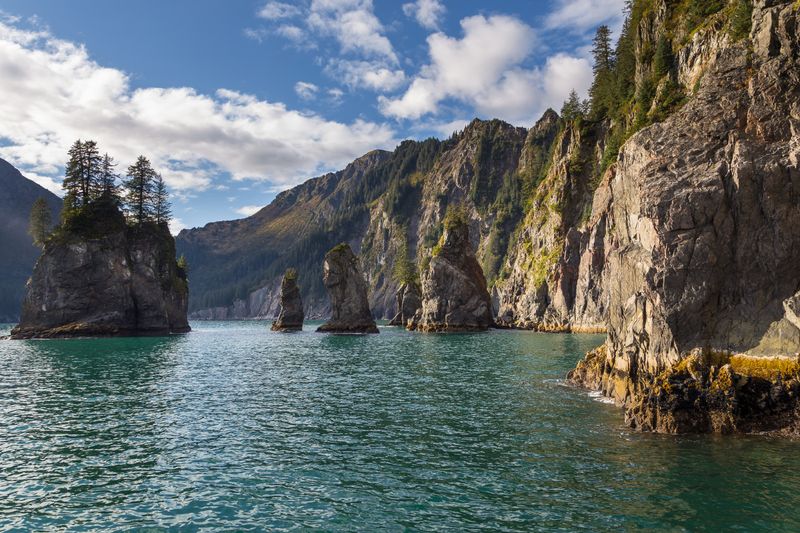
Steep cliffs plunge dramatically into deep blue waters, creating the stunning fjords that give this park its name. Ancient glaciers carved these valleys over millennia, grinding through solid rock with incredible force.
Aialik Bay and Nuka Bay showcase some of the most spectacular examples of glacial carving in North America. These drowned mountain valleys now fill with seawater, creating perfect habitats for marine wildlife.
Rising sea levels and land subsidence helped create these magnificent waterways after glaciers retreated. Today, these fjords provide protected harbors for boats while offering visitors some of the most breathtaking scenery imaginable anywhere on Earth.
8. Alutiiq People Called This Land Home for Centuries

Long before tourists discovered this wilderness, the Sugpiaq (Alutiiq) people thrived here for over a thousand years. Archaeological evidence reveals sophisticated communities that understood how to live sustainably in this challenging environment.
Traditional hunting and fishing practices provided everything these indigenous communities needed to survive harsh winters and short summers. Their knowledge of marine resources, weather patterns, and wildlife behavior helped them flourish in this remote region.
Today, their cultural heritage adds important historical context to park visits. Learning about Alutiiq traditions helps modern visitors appreciate the deep connection between people and this extraordinary landscape that continues to this day.
9. Climate Change Creates a Living Laboratory of Transformation
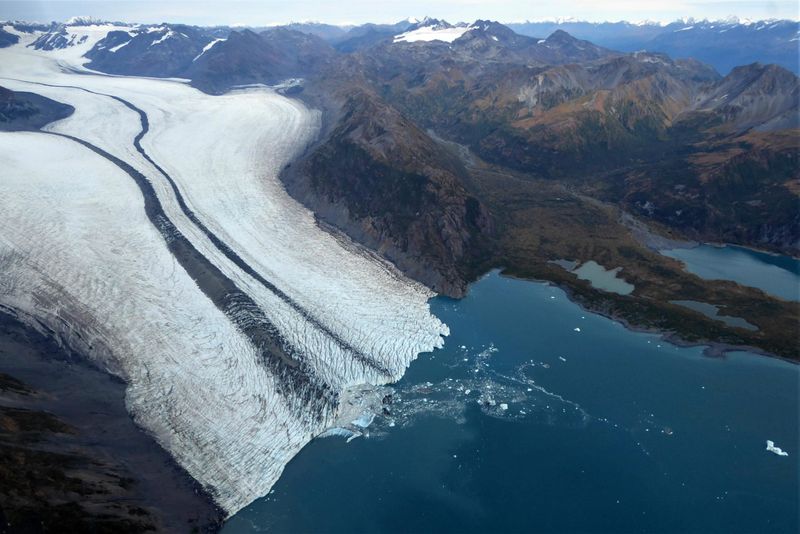
Scientists flock here to study one of the world’s most dramatic examples of rapid environmental change. Glaciers retreat at visible rates, allowing researchers to document climate impacts in real time rather than through computer models.
Some glaciers have retreated several miles in just a few decades, exposing land that hasn’t seen sunlight for thousands of years. New plant communities quickly establish themselves on this freshly exposed ground.
Visitors witness environmental transformation happening before their eyes, making abstract climate concepts suddenly very concrete. This park serves as an outdoor classroom where people can understand global changes through direct observation and personal experience.
10. Photography Paradise Captures Alaska’s Most Stunning Scenery
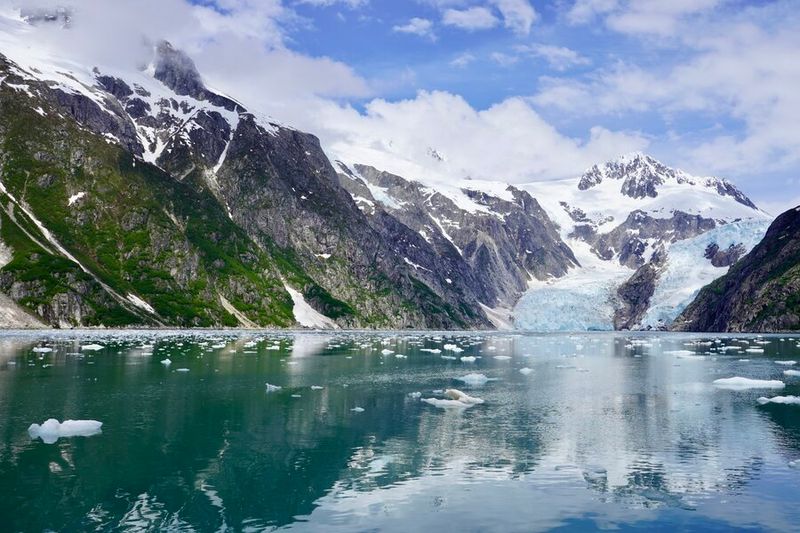
Professional photographers and casual snapshooters alike discover endless inspiration throughout this visual wonderland. Brilliant blue glacier ice contrasts beautifully with dark rocky cliffs and emerald green forests, creating natural compositions that seem almost too perfect.
Wildlife photography opportunities abound as whales breach near tour boats while puffins pose on nearby rocks. Golden hour lighting transforms ordinary scenes into magical moments that fill memory cards quickly.
Rugged mountains reflect perfectly in calm fjord waters, while dramatic weather creates ever-changing lighting conditions. Every season offers unique photographic opportunities, making this destination a favorite among serious photographers seeking Alaska’s most iconic images.

